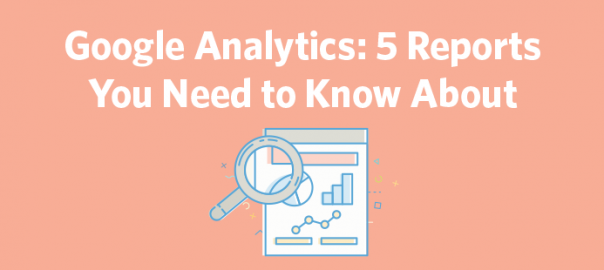
If you have a website, you should be using Google Analytics.
Why? Google Analytics is one of the most valuable tools available to website owners and it’s completely free.
Adding a little bit of code to your webpages opens you up to a wealth of invaluable data that allows you to measure how well your website is meeting its goals and find insights into how to improve it.
The Basics of Setting Up Google Analytics
Setting up Google Analytics on your site is fairly simple.
- First, you’ll need to set up a Google Analytics account if you don’t already have one (go here and click Sign In at the upper right).
- Then, log in and set up a property for your website based on the instructions provided.
- Finally, Google Analytics will provide you with a tracking ID that you’ll need to add to the code of the webpages on your website. If you have a WordPress site, there are a few easy ways to add the tracking ID to all your pages at once.
That’s it!
Now that you’re set up, let’s look at some of the most important metrics available to you.
The Most Important Metrics to Know
Google Analytics will automatically start collecting data for you to view in an intuitive interface.
There’s a lot of different information packed into the data they provide, but to start, these are the most important analytics to pay attention to.
1. Website Traffic
The first thing you’ll see any time you sign into Google Analytics is your basic traffic information in the Reporting dashboard.

This page tells you:
- How many total visits people have made to your website;
- How many of them are repeat visitors;
- How many pages have been visited;
- How long people usually stay on your site once they get there; and
- How many pages most visitors visit before leaving.
These metrics reveal a basic level how well your website is performing.
No matter what type of website you have, you probably want to receive a lot of traffic and you want it to be from visitors that like your website enough to hang around for a while and even come back later for more. These metrics tell you to what degree that’s happening.
Tip: Looking to increase your website traffic? See how email marketing can help.
2. Demographics
To learn a little more about who your site visitors are, navigate to the Audience section in the left-hand menu. Here you can learn basic demographic information about your visitors, including:
- Gender
- Age
- Other interests their internet browsing reveals
- Geographic location
- What type of device they visited on (mobile, desktop, or tablet)

These metrics reveal if the audience you’re meaning to reach is the one you’re actually getting. If it isn’t, you can shift your strategy based on the characteristics and interests of the visitors coming to your site.
Knowing which devices people are coming from also helps you determine how important having a mobile website and marketing strategy is (hint: it’s probably very important).
3. Traffic Sources
Most of your online marketing efforts are likely devoted to pointing people back to your website. The best way to see if they’re working is to track which marketing channels bring new traffic to the website.
The Acquisition section in Google Analytics is where you’ll see how visitors found you.

This section gives you an idea of how well your SEO efforts, social media marketing, and email marketing are all paying off.
Tip: Add a tracking code to your email campaigns to see how much traffic is coming directly from your emails.
4. Visitor Behavior
Getting people to your website is just the beginning. You want them to like what they see and stick around once they get there as well.
The Behavior section of Google Analytics lets you know what your visitors are doing once they arrive on your website. You can see which pages they visit the most, how long they tend to spend on them, and which pages consistently lead visitors to click through to other pages.

This section also helps you see how specific pages on your website are performing and illuminates which ones could use some work.
If you have a content strategy, the data here can help you understand which topics and content types your visitors respond to the most in order to strengthen your strategy moving forward.
5. Conversion Rates
Finally, most websites should have at least one conversion goal and most will have several.
If you have an online store, the main goal is to get visitors to buy your products. If you do email marketing, one of your goals should be to get people to join your email list. For some pages and blog posts, the goal could be to get people to click through to a different landing page or post.
You can tell Google Analytics what your main conversion goals are for the website, and even how much each goal is worth to you. Then a Conversions section will appear next to Acquisitions and Behavior.
Review this regularly to track, in specific terms, how well your website is meeting your goals.

That’s Just the Beginning
Those are the basics every website owner should know to get started, but once you’re familiar with Google Analytics you can dig deeper and find even more valuable insights and hidden gems.
The more you use the data the tool makes available, the better you’ll be at crafting your website to please your visitors and meet your goals.
Digital & Social Articles on Business 2 Community(23)
Report Post



